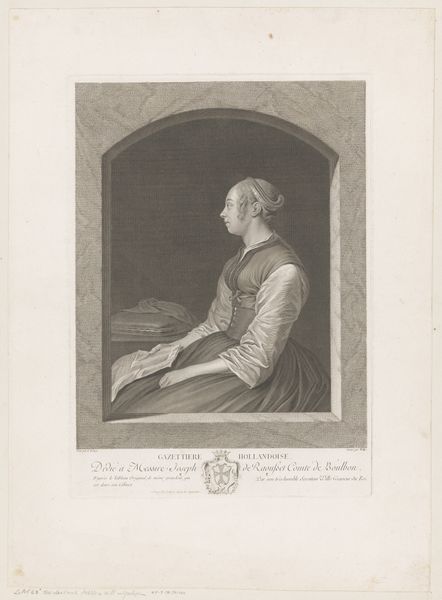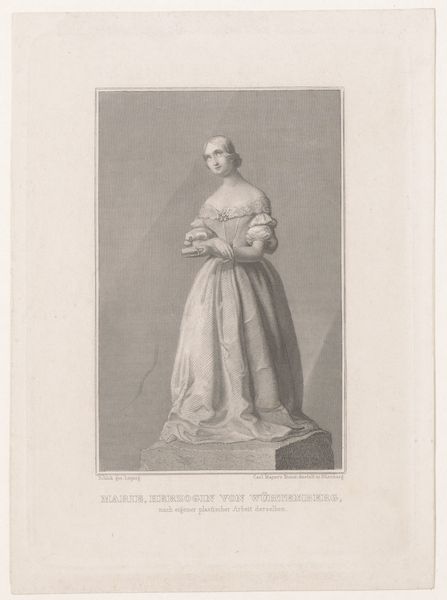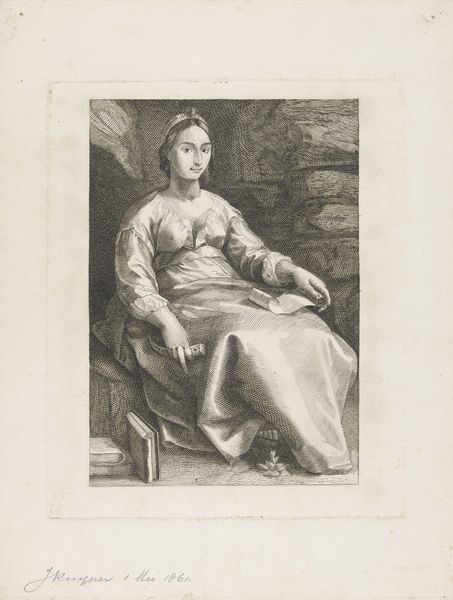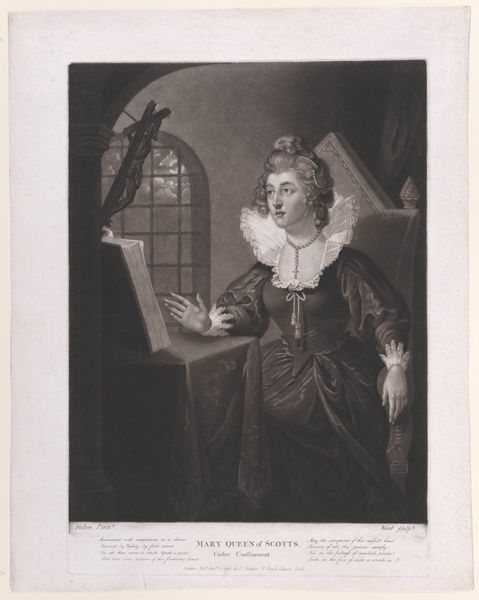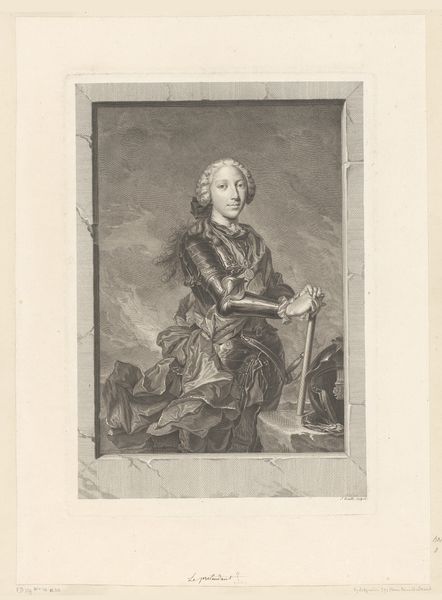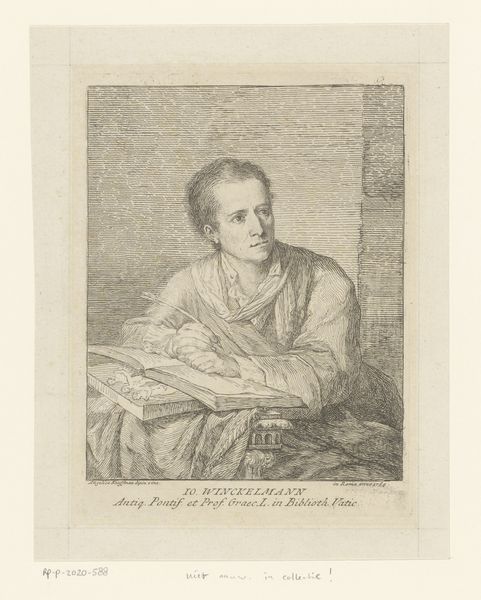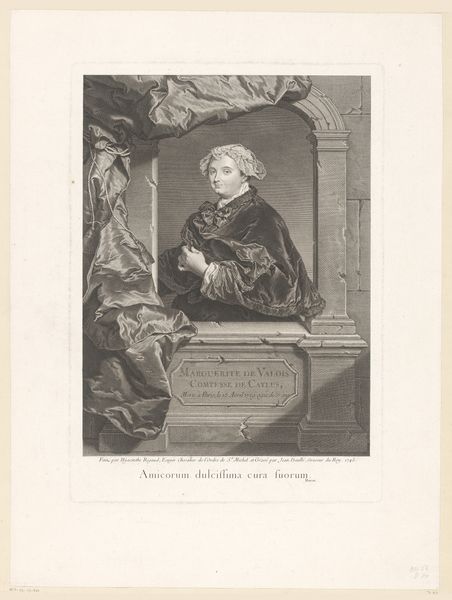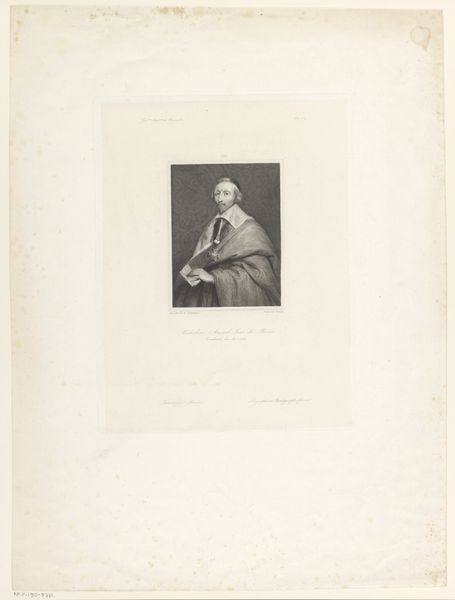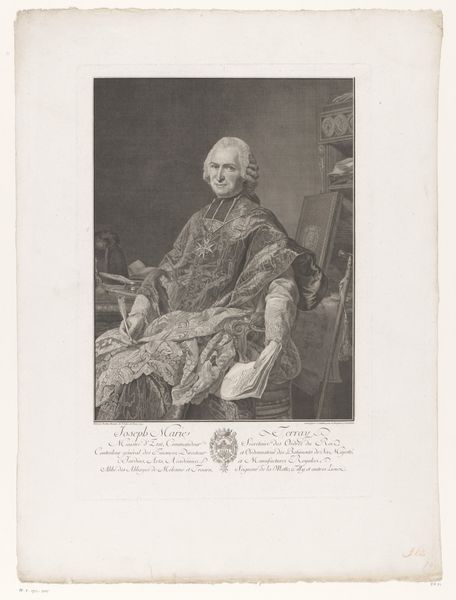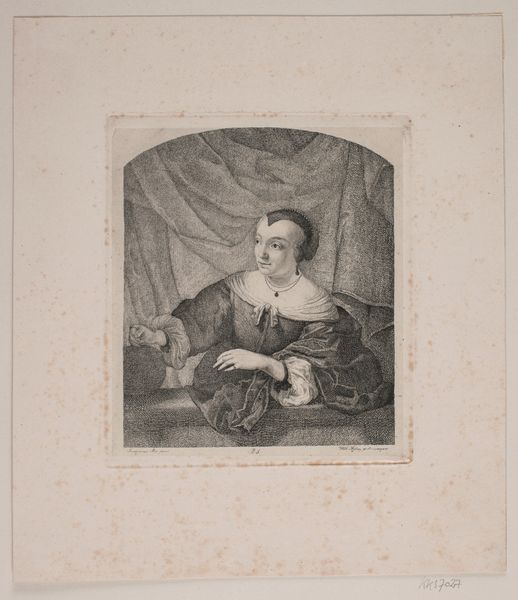
print, engraving
#
portrait
#
dutch-golden-age
# print
#
figuration
#
genre-painting
#
history-painting
#
graphite
#
engraving
#
realism
Dimensions: height 264 mm, width 215 mm
Copyright: Rijks Museum: Open Domain
Curator: Ah, I find this print quite affecting. It's titled "Hoen aan het spit," or "Chicken on the Spit," created by George Andries Karsen in 1864. Editor: It’s immediately evocative – stark, yet intimate. The textures almost trick the eye; you can almost smell the roasting chicken, can’t you? Curator: You can, which I find astonishing in an engraving! Looking closely, it strikes me that the detail is phenomenal. Karsen really captured the soft glow of the light reflecting off of the chicken's skin. You almost forget the labor involved. Editor: Absolutely. Think about the engraving process itself—the material reality! The artist meticulously cuts lines into a metal plate, using tools crafted for the job. Each line contributes to the overall composition, built from labor, literally inscribed into the metal. We are far away from the Dutch Golden Age when the scene seems to have been rooted. Curator: True, and Karsen chose an everyday domestic scene for this detailed rendering. But look at the woman. She seems a bit detached, doesn't she? There's a kind of pensiveness there that transcends the simple task at hand. It elevates the engraving beyond mere genre painting, I feel. There is much psychology in that face, don't you think? Editor: Yes, it feels as if the subject may reveal to us that the chicken production and consumption depend greatly on her dedication. Curator: Perhaps. The mood resonates in me so that it becomes melancholic! I find myself contemplating about daily toil. In every strike of light that George Andries Karsen engraves on this copper piece... Editor: Absolutely, each etched line has economic significance. Even the domestic interiors become evidence to reflect labor, gender, and value within a Dutch household. Curator: Thinking now about the history embedded in the medium and what has captured our minds to consider: so simple, but deeply affecting in a surprising way. Editor: I agree. It's a powerful reminder that art doesn’t have to be grandiose to be profound. It can be found within domestic, and labor history.
Comments
No comments
Be the first to comment and join the conversation on the ultimate creative platform.

